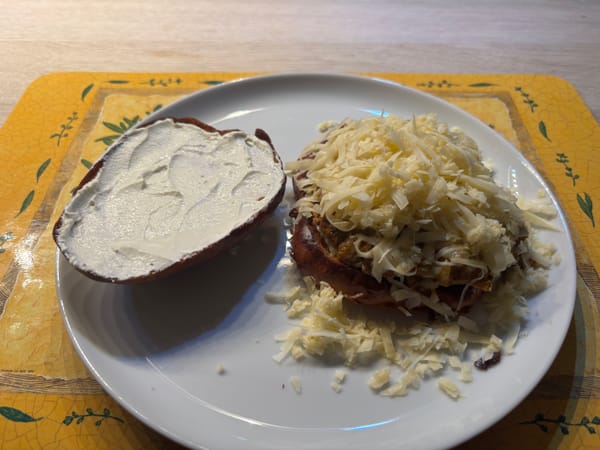A long while ago, one of our clients – Carl for the sakes of this article – asked me about nitric oxide (NO) and cancer. Back then, cursory research simply showed a very diffuse connection between NO and cancer. Some studies indicated an association of increased NO with improved patient quality of life and survival, whereas others showed the inverse.
I didn't have enough circumstantial data back then to notice the mechanism for this Januform effect of NO on cancer patient outcomes. Now, having done more reading into NO, methylene blue, hydrogenated water, and cancer in general, I've noticed a highly interesting web of interaction between these four players.
This bring us to present time, where I'm writing my findings out for you to make these insights accessible to you. But where are we to begin? I think the easiest way to go about this is to simply follow the very path of discovery I made in largely the order I did. Granted, I will make some alterations to the sequence of events to present a more linear explorative journey, instead of the highly non-linear, diffuse, and chaotic meandering I actually went through. I do this simply to make it more digestible.
The Negative Effects of Nitric Oxide on Cancer
As stated, I wasn't able to make any clear-cut recommendations on the effect of NO on cancer on the first occasion of enquiry by Carl. The first study I ever read on it paints an exceedingly negative picture about the effects of NO on cancer – in this case, specifically lung cancer.1
According to the given review NO improves apoptotic resistance and metastatic capabilities of cancer cells, both of which have a plethora of negative effects on patient quality of life and survival rate and duration.
Higher apoptotic resistance increases the damage, aberration, and mutation a cancer cell can suffer without dying, which leads to a far broader evolutionary spectrum being available to such hyper-surviving cells, as evolutionary valleys could theoretically be bridged without incurring death, where cells with normative apoptotic regulation would self-terminate before traversing such valleys.2 Given that cancer can be described as an evolutionary process, which terminates in a cancer cells losing multicellularity, such greater apoptotic resistance becomes even more so problematic.3 Apoptotic resistance decreases the efficacy of practically all non-metabolic cancer interventions. This includes chemotherapy, radiotherapy, immunotherapy, and alkalisation therapy.
Furthermore, improvements in metastatic capabilities lead to greater spread of a given cancer throughout the body, which significantly worsens patient outcome prognoses and makes it harder to treat by surgery and external irradiation therapies, as these require localised tumours to be effective.
This does sound quite damning, especially considering the fact that NO is readily produced within the body by the cells of our body and acts as a hormone. Luckily the image is more complex and nuanced than a direct negative effect of NO for cancer patients.
For now we'll leave NO alone and take a look at something entirely different. I promise, we'll get back to NO afterwards.
How Hydrogenated Water Improves Various Health Markers
I came across hydrogenated water not by my own merit but by a random call by an acquaintance who's been working with a firm producing and selling bottle-shaped generators of hydrogenated water. She asked me, whether I'd ever looked at the prospects of using hydrogenated water with our patients. I had never heard of it back then and was more than a little skeptical.
I've seen positive effects for cancer patients claimed many times where it wasn't at all warranted based on available research. Nonetheless, I promised her to look into it, not least because I was once equally skeptical of anti-cancer effects of sodium bicarbonate administration, when I was first asked about it by the anonymised Carl, whereafter the anti-cancer effects of sodium bicarbonate turned out to be well-founded in research literature.5–7 I've written about this issue on length in a prior article.8
I did as I promised and looked into the physiological effects of hydrogenated water. To be honest, I was utterly stunned. A week of hydrogenated water intake has been shown to improve physical performance in trained athletes.9 In a 6-month study, hydrogenated water administration was completely harmless and shown to improve several markers of ageing, such as DNA methylation, sleep quality, telomere length, lower and upper body strength, and anti-oxidant status.10
Now, what's much more exciting for our interests around cancer, in a mouse xenograft model (mice transplanted with human cancers) administration of hydrogenated water showed the same anti-cancer efficacy as did administration of 5-fluorouracil – a common and highly toxic chemotherapeutic –, only being surpassed in performance by coadministration of hydrogenated water with 5-fluorouracil.11–2 That's already a huge green flag: therapeutic effects on par with a common chemotherapeutic and none of the adverse side effects – at least in mice.
If we now go back to our consideration of NO, the beneficial effects of hydrogenated water administration for cancer patients becomes even more clear-cut.
The Positive Effects of Nitric Oxide and How to Prevent Its Negative Effects
The primary thing molecular hydrogen – the component added to water to make hydrogenated water – does is to act as a powerful antioxidant scavenging and thus neutralising reactive oxygen and nitrogen species.13 That's cool, but what has it to do with NO?
NO itself is what's termed a free radical in biochemistry. This means, that NO carries a single unpaired electron. If you've been into chemistry, you know that such an unpaired electron is highly reactive and thus very happy to react with surrounding molecules. Whilst this is true for NO, NO is one of the least reactive free radicals and, much like peroxide radicals or hydrogen peroxide, exhibits signalling function within cells.14
The Januform effects of NO toward cancer may mirror those seen in the effects of NO on neuronal tissues, where NO itself has been found to be neuroprotective, whilst peroxynitrite (ONOO–) unfolds neurodestructive effects.15
Now interestingly, hydrogenated water selectively reduces (and thus neutralises the negative effects of) ONOO– and OH•, both of which are highly reactive and thus highly destructive reactive nitrogen and oxygen compounds, respectively.14 What's even better, hydrogenated water leaves NO itself untouched, thus allowing for normative NO signalling to unfold without the detriment of its derivative ONOO–.
The direct effects of NO include promotion of angiogenesis and increase of Fas death receptor activity.16 Angiogenesis has been connected to increase in tumour growth, but whether this is categorically true, is questionable to me. As angiogenesis is the development of new blood vessels and as blood carries – yes – nutrients, which would help cancer growth, but also immune cells and pharmaceuticals, it's not obvious that angiogenesis is a net detriment to cancer patients. It may, much as NO itself, be highly context-dependent. Increasing Fas death receptor activity, however, is unambiguously beneficial to the cancer patient as it improves Fas receptor–mediated apoptosis of cancer cells.17
Given the fact that the part of NO signalling affecting the immune system is already excessively complex, I think it would be premature to attempt categorical NO suppression in cancer patients.18 As NO is involved in immune system modulation, that depends heavily on context, its suppression would run the risk of curtailing the proper anti-cancer function of pharmaceuticals, proper immune system function against cancer, and much more, we can't possible consider given the complexity of NO signalling.
I thus find the use of hydrogenated water to curtail the negative effects of NO-derived reactive nitrogen species of much lower risk, especially considering the absolute non-toxicity of molecular hydrogen (and therewith of hydrogenated water).14 The same isn't true for the logic of using methylene blue against cancer.
The Questionable Logic of Methylene Blue Administration
Clinically methylene blue is used for treatment of methaemoglobinaemia, which usually occurs after exposure to certain drugs, but it also has a few other pharmacological effects. Amongst these are the categorical suppression of NO production, the suppression of guanylate cyclase, and inhibition of monoamine oxidase.19
We've already gone over the highly questionable benefit of the categorical suppression of NO above. What's more, NO suppression also raises blood pressure by disallowing for vascular relaxation. High blood pressure has been found to be a powerful risk factor in the development of cardiovascular disease, heart failure, and dementia amongst others.20 I don't think it necessarily smart to expose cancer patients to such risks, when it's not necessary for their treatment and the benefit to treatment is highly questionable.
Guanylate cyclase is an enzyme used extensively in intracellular signalling. Amongst its functions is its action in visual signalling. Specifically, guanylate cyclase is necessary to reset rod cells to light sensitivity after light stimulation has ceased.21
As a point of contrary evidence, one may bring the common remarks from people using methylene blue that they feel better and more awake and energised, when using the pharmaceutical. This could be due to two factors. Methylene blue has been shown to aid in ameliorating mitochondrial dysfunction, and it is an inhibitor of monoamine oxidase.19,21
We've written about the role of correcting mitochondrial dysfunction – which is achievable without the use of pharmaceuticals – for treating cancer in past articles and the Mosaic Method.22–4 Granted, helping ameliorate mitochondrial dysfunction is decidedly a positive effect of methylene blue for cancer patients, though given the fact, that we can correct mitochondrial dysfunction by other means, I find this significantly curtails the usefulness of and necessity for methylene blue in this respect.
Its function as a monoamine oxidase inhibitor can easily make someone administered the drug feel quite elated and energised, much like amphetamines, which can also inhibit monoamine oxidase, would make them feel the same.25 I thus find that discarding the argument of 'it makes people feel good' valid, until further evidence for its utility for purposes not otherwise achievable is brought forward.
Closing Remarks
So, let's summarise, what we've talked about today.
Whilst NO initially seemed to have negative effects for cancer patients, we saw, that NO is far more Januform in its effect on cancer and that we see outsized negative effects being transmitted by NO derivatives like ONOO–, not NO itself. We then found out, that amongst many other health benefits, hydrogenated water actually specifically reduces and thus neutralises the detriment of ONOO–.
Furthermore, we learnt that the direct signalling of NO in cancer is at best modulating, if not directly beneficial to patients, as it improves Fas death receptor signalling and angiogenesis. Granted angiogenesis has oftentimes been connected with cancer growth, progression, and metastasis, but given the fact, that blood composition can affect cancer cells by supplying nutrients or withholding them, by giving access to immune cells to the cancer, and by delivering pharmaceuticals to the cancer, angiogenesis may act more like a modulator rather than a straight detriment.
Lastly, we looked at methylene blue, which has found some accreditation in research, both for general health support and against cancer. Whilst it has manifold pharmacological effects, those effects positive for cancer patients can be replicated using other interventions, thus eliminating the detrimental effects of methylene blue, whilst attaining its positive effects via other means.
I hope this has been interesting and helpful to you.
God bless,
Merlin L. Marquard.
References:
- Luanpitpong S, Chanvorachote P. Nitric Oxide and Aggressive Behavior of Lung Cancer Cells. Anticancer Research. 2015;35(9):4585.
- Lenski RE. Experimental evolution and the dynamics of adaptation and genome evolution in microbial populations. The ISME Journal. 2017 Oct 1;11(10):2181–94.
- Alfarouk KO, Shayoub MEA, Muddathir AK, Elhassan GO, Bashir AHH. Evolution of Tumor Metabolism might Reflect Carcinogenesis as a Reverse Evolution process (Dismantling of Multicellularity). Cancers. 2011;3(3):3002–17.
- Alberts B, Johnson A, Lewis J, Morgan D, Raff M, Roberts K, et al. Energy Conversion: Mitochondria and Chloroplasts. In: Molecular Biology of the Cell. 6th edn New York, US: Garland Science, Taylor & Francis Group, LLC; 2015. p. 753–812.
- Tayeb Basta. Sodium Bicarbonate: Potential Cancer Therapy. Journal of Hunan University Natural Sciences. 2024;51(6):89–99.
- Ibrahim-Hashim A, Estrella V. Acidosis and cancer: from mechanism to neutralization. Cancer Metastasis Rev. 2019 June;38(1–2):149–55.
- Ying C, Jin C, Zeng S, Chao M, Hu X. Alkalization of cellular pH leads to cancer cell death by disrupting autophagy and mitochondrial function. Oncogene. 2022 July;41(31):3886–97.
- Leonhard Marquard M. Helping Cancer Heal through pH Neutralisation [Internet]. Marchward Journal. 2025. Available from: https://www.marchward.com/helping-cancer-heal-through-ph-neutralisation/
- Timón R, Olcina G, González-Custodio A, Camacho-Cardenosa M, Camacho-Cardenosa A, Martínez Guardado I. Effects of 7-day intake of hydrogen-rich water on physical performance of trained and untrained subjects. Biol Sport. 2021 June;38(2):269–75.
- Zanini D, Todorovic N, Korovljev D, Stajer V, Ostojic J, Purac J, et al. The effects of 6-month hydrogen-rich water intake on molecular and phenotypic biomarkers of aging in older adults aged 70 years and over: A randomized controlled pilot trial. Experimental Gerontology. 2021 Nov 1;155:111574.
- Asgharzadeh F, Tarnava A, Mostafapour A, Khazaei M, LeBaron TW. Hydrogen-rich water exerts anti-tumor effects comparable to 5-fluorouracil in a colorectal cancer xenograft model. World J Gastrointest Oncol. 2022 Jan 15;14(1):242–52.
- Casale J, Patel P. StatPearls [Internet]. 2024 [cited 2025 Sept 25]. Fluorouracil. Available from: https://www.ncbi.nlm.nih.gov/books/NBK549808/
- Slezák J, Kura B, Frimmel K, Zálešák M, Ravingerová T, Viczenczová C, et al. Preventive and therapeutic application of molecular hydrogen in situations with excessive production of free radicals. Physiol Res. 2016 Sept 19;65 Suppl 1:S11-28.
- Ohta S. Molecular hydrogen as a preventive and therapeutic medical gas: initiation, development and potential of hydrogen medicine. Pharmacology & Therapeutics. 2014 Oct 1;144(1):1–11.
- Lipton SA, Choi YB, Pan ZH, Lei SZ, Chen HS, Sucher NJ, et al. A redox-based mechanism for the neuroprotective and neurodestructive effects of nitric oxide and related nitroso-compounds. Nature. 1993 Aug 12;364(6438):626–32.
- Xu W, Liu LZ, Loizidou M, Ahmed M, Charles IG. The role of nitric oxide in cancer. Cell Research. 2002 Dec 1;12(5):311–20.
- Leon-Bollotte L, Subramaniam SV, Cauvard O, Plenchette-Colas S, Paul C, Godard C, et al. S-nitrosylation of the death receptor fas promotes fas ligand-mediated apoptosis in cancer cells. Gastroenterology. 140 7:2009–18, 2018.e1-4.
- Bogdan C. Nitric oxide and the immune response. Nat Immunol. 2001 Oct;2(10):907–16.
- Bistas E, Sanghavi DK. Methylene Blue. In: StatPearls [Internet]. Treasure Island (FL): StatPearls Publishing; 2025 [cited 2025 Sept 29]. Available from: http://www.ncbi.nlm.nih.gov/books/NBK557593/
- Fuchs FD, Whelton PK. High Blood Pressure and Cardiovascular Disease. In: Hypertension [Internet]. 2020 [cited 2025 Sept 29].; p. 285–92. Available from: https://www.ahajournals.org/doi/10.1161/HYPERTENSIONAHA.119.14240
- Alberts B, Johnson A, Lewis J, Morgan D, Raff M, Roberts K, et al. Cell Signaling. In: Molecular Biology of the Cell. 6th edn New York, US: Garland Science, Taylor & Francis Group, LLC; 2015.; p. 813–88.
- Leonhard Marquard M. Can We Force Cancer Cells into Suicide? [Internet]. Marchward. 2025 [cited 2025 Sept 29]. Available from: https://www.marchward.com/can-we-force-cancer-cells-into-suicide/
- Leonhard Marquard M. Helping Cancer Heal through pH Neutralisation [Internet]. Marchward. 2025. Available from: https://www.marchward.com/helping-cancer-heal-through-ph-neutralisation/
- Leonard Marquard M, Leonhard Marquard C. The Mosaic Method [Internet]. Marchward. 2025 [cited 2025 Sept 29]. Available from: https://www.marchward.com/mosaic/
- Reyes-Parada M, Iturriaga-Vasquez P, Cassels BK. Amphetamine Derivatives as Monoamine Oxidase Inhibitors. Front Pharmacol [Internet]. 2020 Jan 23 [cited 2025 Sept 29];10. Available from: https://www.frontiersin.org/journals/pharmacology/articles/10.3389/fphar.2019.01590/full










